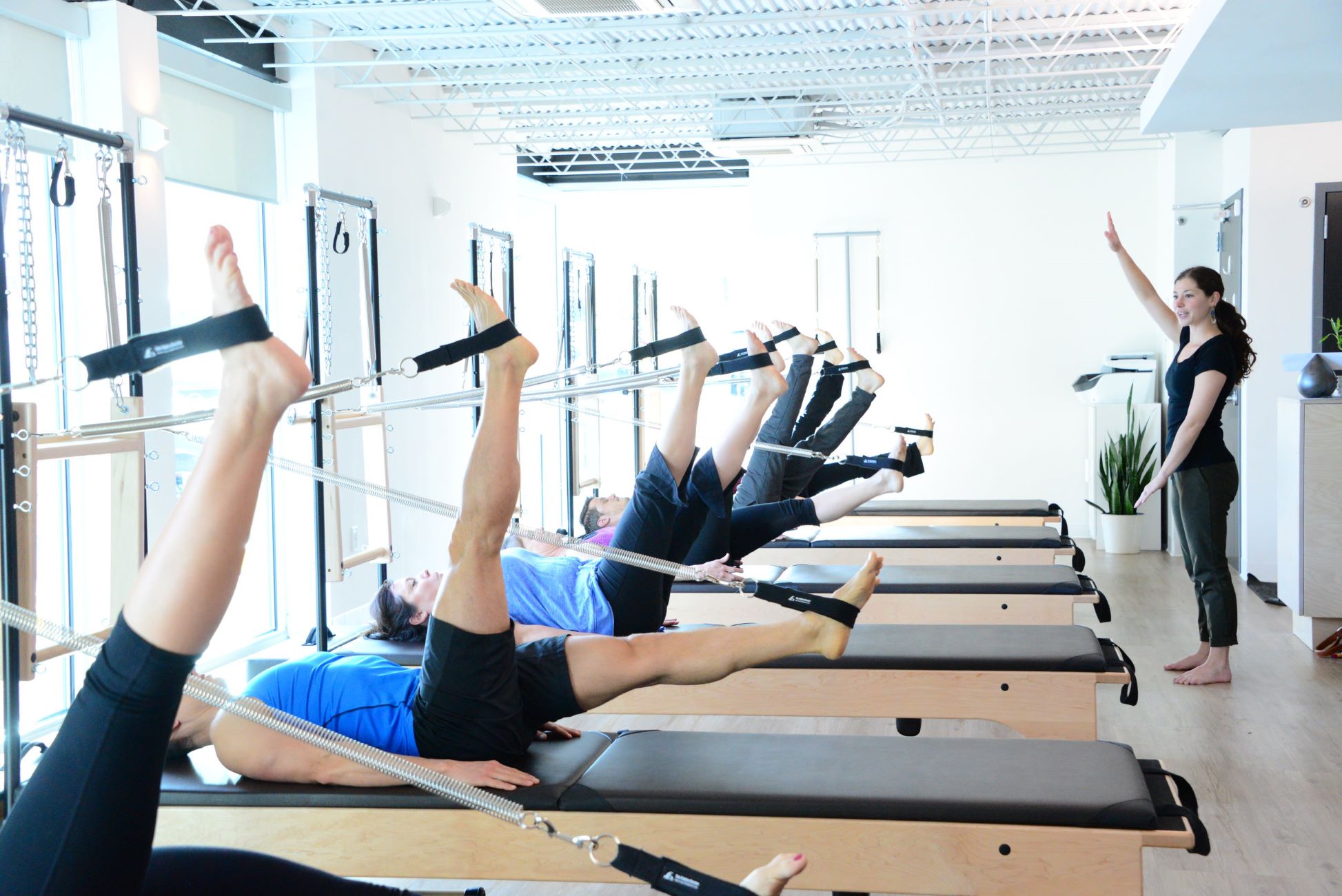Home>Training & Techniques>Cross-Training>The Benefits And Techniques Of Incorporating Ellipticals Into A Runner’s Routine


Cross-Training
The Benefits And Techniques Of Incorporating Ellipticals Into A Runner’s Routine
Published: February 20, 2024
Discover the benefits of cross-training with ellipticals for runners and learn effective techniques to enhance your routine. Incorporate variety and reduce the risk of injury.
(Many of the links in this article redirect to a specific reviewed product. Your purchase of these products through affiliate links helps to generate commission for Therunningadvisor.com, at no extra cost. Learn more)
Table of Contents
Introduction
In the realm of fitness and endurance training, runners are constantly seeking ways to improve their performance, prevent injuries, and enhance their overall well-being. While traditional running remains a cornerstone of their training regimen, many runners are discovering the immense benefits of incorporating elliptical workouts into their routines. This versatile piece of equipment offers a low-impact, full-body workout that complements running, providing a host of advantages that can significantly elevate a runner's performance and overall fitness level.
Elliptical training, also known as cross-training, has gained widespread popularity among runners due to its ability to mimic the natural motion of running while reducing the impact on joints and muscles. This makes it an ideal alternative for individuals seeking to minimize the risk of overuse injuries or those recovering from such conditions. Additionally, the elliptical machine offers a dynamic workout that engages various muscle groups, including the quadriceps, hamstrings, glutes, and core, thereby promoting strength and stability throughout the body.
As runners strive to achieve peak performance, they often encounter challenges such as plateauing progress, muscle imbalances, or the need for active recovery. Incorporating elliptical training into their routines can address these concerns effectively. By engaging in cross-training, runners can enhance their cardiovascular endurance, improve muscular strength and endurance, and break through performance plateaus. Moreover, the low-impact nature of elliptical workouts allows for active recovery, enabling runners to maintain their training momentum while giving their bodies a break from the repetitive stress of running.
In this article, we will delve into the myriad benefits of elliptical training for runners, exploring how it can serve as a valuable addition to their training arsenal. Furthermore, we will discuss techniques for seamlessly integrating elliptical workouts into a runner's routine, as well as provide practical tips for maximizing the benefits of cross-training. Whether you're a seasoned marathoner or a novice runner, understanding the advantages and techniques of incorporating ellipticals into your training regimen can be a game-changer in your pursuit of peak performance and overall well-being.
Understanding the Benefits of Elliptical Training for Runners
Elliptical training offers a myriad of benefits for runners, making it a valuable addition to their training regimen. One of the most significant advantages of incorporating elliptical workouts is the low-impact nature of this form of exercise. Unlike running on hard surfaces, which can exert considerable stress on the joints and muscles, elliptical training provides a smooth, gliding motion that minimizes impact. This reduction in impact is particularly beneficial for runners seeking to prevent or recover from injuries, as it allows them to engage in cardiovascular exercise without subjecting their bodies to the repetitive pounding associated with running on roads or treadmills.
Furthermore, elliptical training facilitates a full-body workout, engaging both the upper and lower body simultaneously. This comprehensive engagement of muscle groups, including the quadriceps, hamstrings, glutes, and core, contributes to improved muscular strength and endurance. By targeting multiple muscle groups, runners can address potential imbalances and enhance overall stability, which is essential for maintaining proper form and reducing the risk of injuries during running.
In addition to its physical benefits, elliptical training also serves as an effective tool for cardiovascular conditioning. The adjustable resistance levels and incline settings on elliptical machines enable runners to customize their workouts to match their desired intensity, thereby enhancing their cardiovascular endurance. This cardiovascular conditioning not only complements running but also provides an avenue for active recovery, allowing runners to maintain their fitness levels while reducing the impact on their bodies.
Moreover, incorporating elliptical training into a runner's routine can help break through performance plateaus. By introducing a new form of exercise that challenges the body in different ways, runners can overcome stagnation in their training progress and achieve new levels of fitness. This variety in training also adds a layer of mental stimulation, keeping workouts engaging and enjoyable, which is crucial for long-term adherence to a training program.
Overall, the benefits of elliptical training for runners are multifaceted, encompassing injury prevention, full-body conditioning, cardiovascular enhancement, and performance breakthroughs. By understanding and harnessing these advantages, runners can optimize their training regimens and elevate their overall fitness and performance levels.
Techniques for Incorporating Elliptical Workouts into Your Running Routine
Incorporating elliptical workouts into a running routine requires a strategic approach to ensure seamless integration and maximum benefit. Here are several techniques to effectively blend elliptical training with running:
-
Alternate Training Days: Designate specific days for elliptical workouts and running sessions. For example, you can schedule an elliptical workout on days when you're aiming for active recovery or seeking a low-impact exercise alternative. This approach allows for adequate rest and recovery between running sessions while still engaging in beneficial cardiovascular and full-body workouts.
-
Cross-Training Sessions: Integrate cross-training sessions that combine both running and elliptical workouts. For instance, you can start with a moderate-intensity run followed by a session on the elliptical machine. This approach provides a balanced workout that targets different muscle groups and energy systems, contributing to overall fitness and performance enhancement.
-
Interval Training: Incorporate interval training into your elliptical workouts to simulate the intensity variations experienced during running. By alternating between periods of high and low intensity, you can effectively mimic the demands of running while minimizing impact. This technique not only enhances cardiovascular conditioning but also complements the varied intensity levels encountered in running workouts.
-
Specific Focus Workouts: Tailor elliptical workouts to focus on specific aspects of running, such as hill climbs, speed intervals, or endurance challenges. By adjusting the resistance levels and incline settings, you can replicate the demands of different running terrains and training objectives. This targeted approach helps strengthen relevant muscle groups and energy systems, contributing to improved running performance.
-
Recovery and Rehabilitation: Utilize the elliptical machine for active recovery and rehabilitation purposes. During periods of injury recovery or when seeking to reduce the impact on joints and muscles, elliptical training offers a low-impact alternative that maintains cardiovascular fitness and muscular engagement. This technique allows runners to stay active while facilitating the healing process.
-
Consistent Integration: Establish a consistent schedule for incorporating elliptical workouts into your running routine. Whether it's a weekly cross-training session or a designated day for elliptical training, maintaining regularity ensures that both forms of exercise complement each other effectively. Consistent integration also fosters adaptability and balance within your training regimen.
By implementing these techniques, runners can seamlessly integrate elliptical workouts into their training routines, reaping the diverse benefits of cross-training while enhancing their overall fitness and performance levels. This strategic approach not only promotes physical well-being but also adds variety and versatility to the training regimen, contributing to long-term motivation and adherence.
Tips for Maximizing the Benefits of Elliptical Training
To fully harness the advantages of elliptical training and elevate its impact on your overall fitness and running performance, consider the following tips:
-
Focus on Proper Form: Pay attention to your posture and movement mechanics while using the elliptical machine. Maintain an upright position, engage your core muscles, and ensure smooth, controlled motions with your arms and legs. By adhering to proper form, you can maximize the engagement of targeted muscle groups and minimize the risk of strain or injury.
-
Utilize Resistance and Incline: Take advantage of the resistance and incline settings on the elliptical machine to vary the intensity of your workouts. Adjusting these settings allows you to simulate different running terrains, such as hills or flat surfaces, thereby challenging your muscles and cardiovascular system in diverse ways. Gradually increasing resistance and incline levels can also contribute to strength development and enhanced endurance.
-
Incorporate Interval Training: Integrate interval training into your elliptical workouts by alternating between periods of high and low intensity. This approach mirrors the fluctuating intensity levels experienced during running, effectively enhancing cardiovascular conditioning and calorie expenditure. By incorporating intervals, you can optimize the efficiency of your workouts and stimulate continuous progress.
-
Experiment with Reverse Motion: Explore the option of using the elliptical machine in reverse motion. This variation engages different muscle groups and adds a dynamic element to your workouts. By periodically incorporating reverse motion, you can target muscles in unique ways, promoting balanced strength development and overall stability.
-
Monitor and Adjust Stride Length: Be mindful of your stride length while using the elliptical machine. Experiment with different stride lengths to determine the most comfortable and effective range for your body. Adjusting your stride length can influence the level of engagement in your leg muscles and provide a customized workout experience tailored to your individual needs.
-
Incorporate Upper Body Work: Take advantage of the handles on the elliptical machine to engage your upper body during workouts. By actively pushing and pulling the handles while maintaining proper posture, you can involve your chest, back, and arm muscles, creating a more comprehensive full-body workout experience.
-
Stay Hydrated and Energized: Prioritize hydration and adequate nutrition before and after elliptical training sessions. Staying hydrated and fueling your body with nutritious foods supports optimal performance and recovery. Maintaining proper hydration and energy levels is essential for sustaining endurance and maximizing the benefits of your elliptical workouts.
By implementing these tips, you can optimize the effectiveness of your elliptical training, capitalize on its diverse benefits, and seamlessly integrate it into your running routine. Embracing these strategies will not only enhance your physical fitness but also contribute to a well-rounded and sustainable approach to achieving your running and overall wellness goals.
Conclusion
In conclusion, the incorporation of elliptical training into a runner's routine offers a wealth of benefits that extend beyond traditional running workouts. By understanding the advantages and techniques of cross-training with elliptical workouts, runners can elevate their overall fitness, performance, and well-being. The low-impact nature of elliptical training serves as a pivotal factor in injury prevention and recovery, enabling runners to engage in cardiovascular exercise while minimizing the stress on their joints and muscles. This aspect is particularly valuable for individuals seeking to maintain their training momentum or recover from overuse injuries, providing a platform for active recovery and sustained fitness levels.
Moreover, the full-body engagement facilitated by elliptical workouts contributes to improved muscular strength, endurance, and stability, addressing potential imbalances and fortifying the body for the demands of running. The cardiovascular conditioning achieved through elliptical training complements running, offering a versatile avenue for enhancing endurance and breaking through performance plateaus. By integrating elliptical workouts strategically into their routines, runners can experience a comprehensive approach to fitness that encompasses diverse muscle groups and energy systems, ultimately translating into enhanced running performance.
The techniques for seamlessly blending elliptical training with running, such as alternate training days, cross-training sessions, interval training, and specific focus workouts, provide a structured framework for maximizing the benefits of cross-training. These approaches not only promote physical well-being but also add variety and adaptability to the training regimen, fostering long-term motivation and adherence. Additionally, the tips for optimizing elliptical workouts, including focusing on proper form, utilizing resistance and incline, incorporating interval training, and experimenting with reverse motion, offer practical strategies for maximizing the effectiveness of elliptical training and customizing the experience to individual needs.
By embracing the multifaceted benefits and techniques of elliptical training, runners can cultivate a well-rounded approach to their fitness and performance goals. The seamless integration of elliptical workouts into their running routines not only enhances their physical capabilities but also contributes to a sustainable and enjoyable training experience. As runners strive to achieve peak performance and overall well-being, the incorporation of elliptical training stands as a valuable asset, offering a dynamic and complementary dimension to their training arsenal.
















